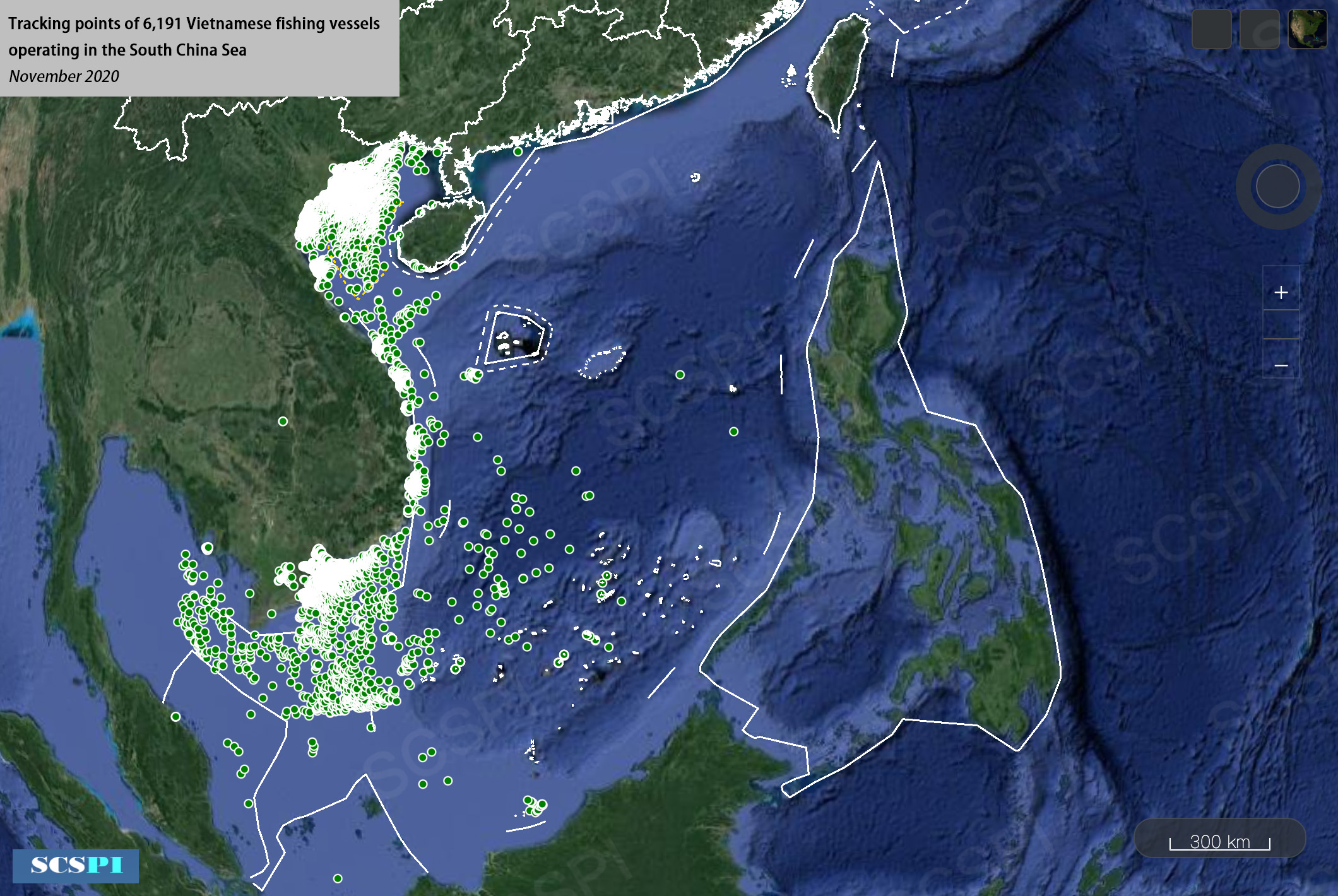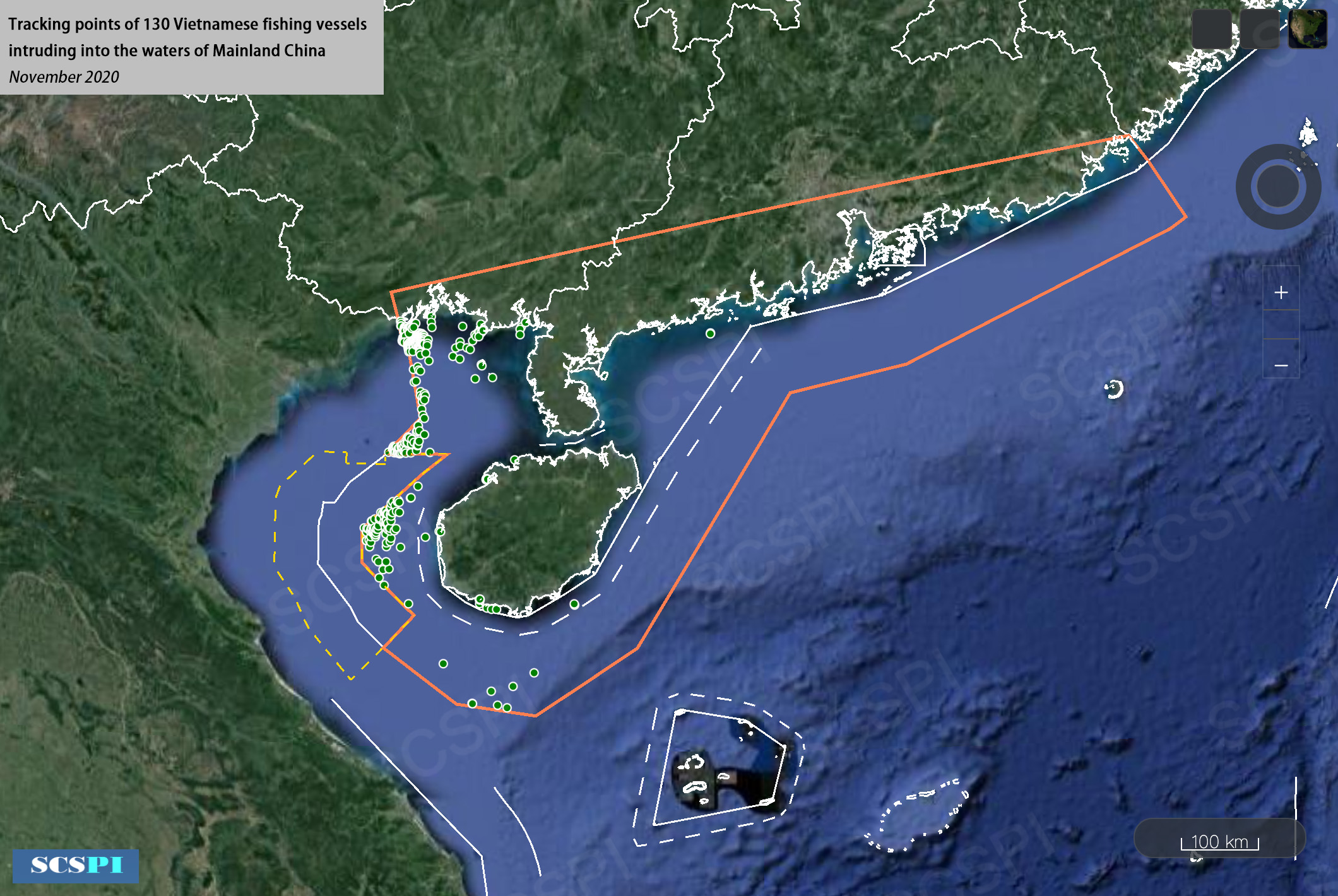In November, a total of 6,191 Vietnamese fishing vessels with 69,193 tracking points were recorded by the AIS in the whole South China Sea, basically static with those in October, and down by more than a third compared with the peak in July.

Rarely seen were those operated in the waters of Malaysia, Indonesia and Cambodia. However, there were quite some intruding into the coastal waters of Chinese mainland and Hainan Island.
In November, the Vietnamese fishing vessels rebounded. According to the AIS statistics, at least 130 Vietnamese fishing vessels intruded into the coastal waters of Chinese mainland and Hainan Island, up by more than 40% compared with 91 in October. (As illustrated in the figure below, the scope covers the waters of the Beibu Gulf, excluding China’s maritime domain within the common fishery zones; the territorial seas and internal waters of Guangdong Province and the Hainan Island; the southeastern waters of the Hainan Island, as well as the area within around 30 NM beyond the Guangdong Province’s territorial seas.)

Most of the intruding Vietnamese fishing vessels were spotted in the waters of the Beibu Gulf on the Chinese side, among which 48 intruded into China’s territorial seas and internal waters, demonstrating a slight decrease compared to 56 in November.
In addition, there were about a dozen Vietnamese fishing vessels intruded into the boundary waters of West Malaysia and the Natuna Islands of Indonesia.
Generally, after months of law enforcement efforts by China’s Coast Guard and local authorities, the Vietnamese fishing vessels’ illegal activities has maintained a relatively low level since October. However, to get rid of this problem, more efforts from both sides, especially from Vietnam, are needed.

